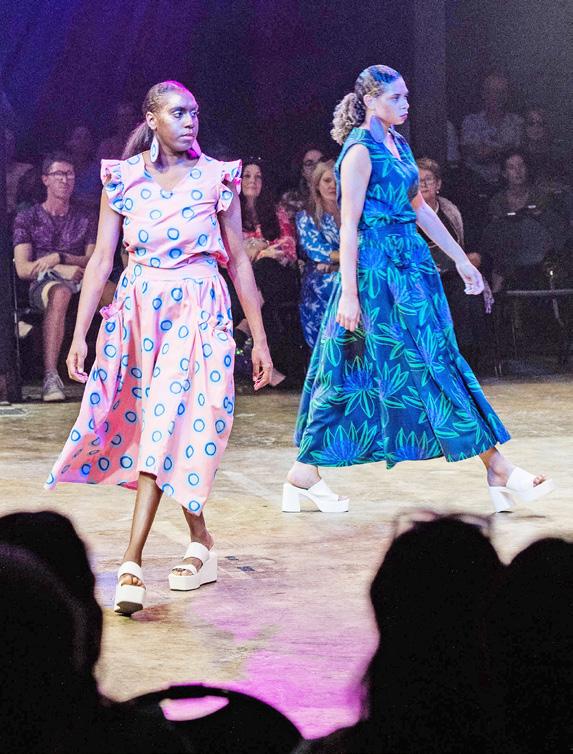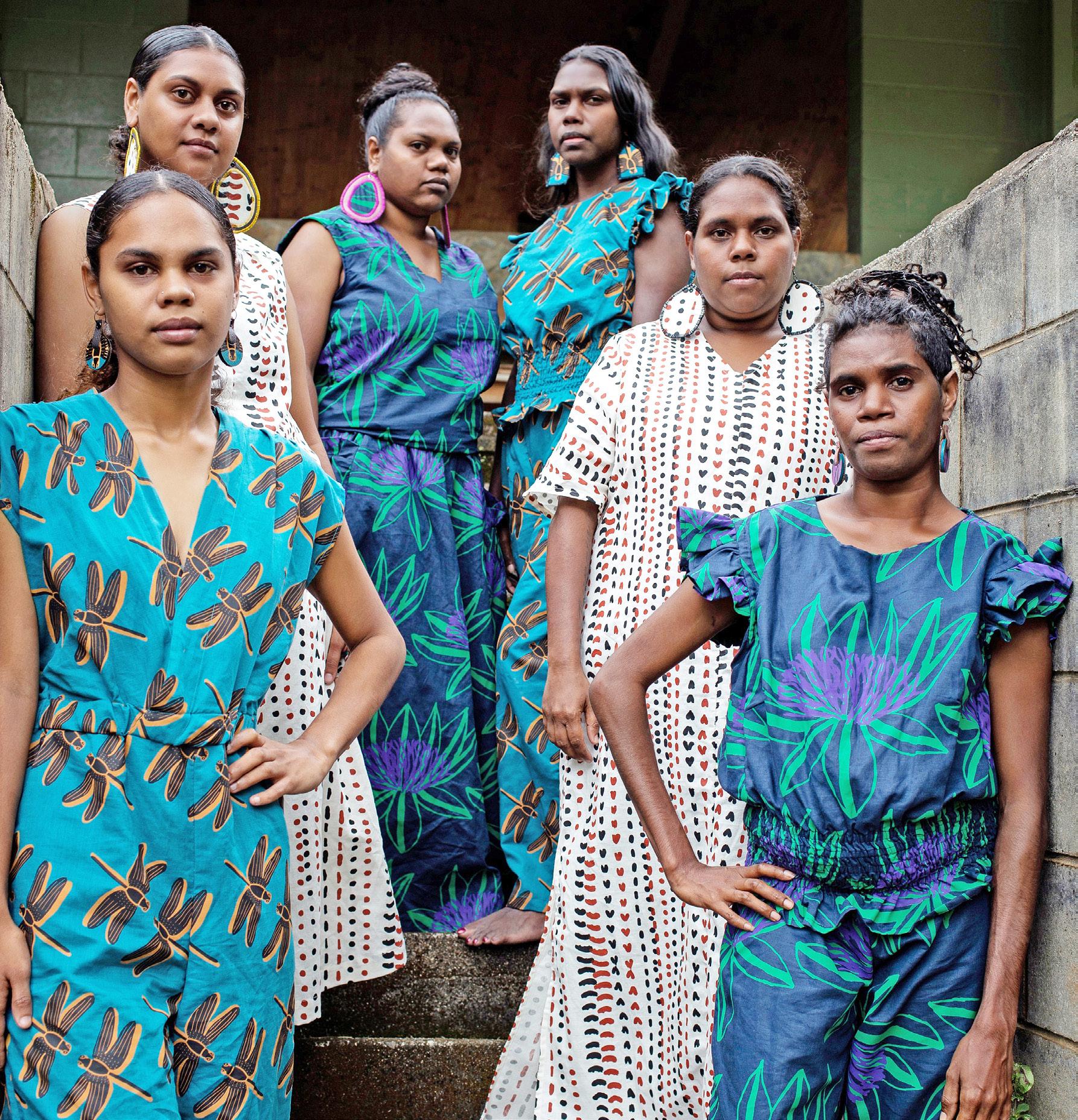
2 minute read
Wujal fashion carves up catwalk
By SARAH MARTIN
THE flora and fauna of Wujal Wujal came alive in colourful designs on the catwalk at Cairns Indigenous Art Fair on Friday.
The talented team at Wujal’s Bana Yirriji Art Centre collaborated with designer Shannon Brett to convert metres of colourful cloth into bespoke garments.
“The designs represent our country, the plants and animals that are around the artists, things that are out in the bush,” Bana Yirriji manager Vikki Burrows said.
“The ladies are so proud, absolutely, representing their culture and their country at Wujal Wujal.”
Wujal Wujal artists Lila Creek, Anne Nunn, Doreen Collins and Junabel Doughboy travelled to Cairns with Ms Burrows for the four-day festival.
“We’ve been coming to CIAF for about 11 years, and we do everything, canvas and linen paintings, ochre, but we’re just in the fashions this year,” Ms Burrows said.
“We put the ladies art onto fabric and collaborated with Shannon Brett to create garments, we call it Kambi, which means flying fox and clothing in Kuku Yalanji.”
The Wujal contingent’s bold, colourful designs, featuring quan- dongs, water lilies, dragonflies and other elements from their rainforest home, were on sale at a popup shop throughout the festival.
Ms Burrows said the artists had sold so much work at Bana Yirriji, that they didn’t have enough for their usual market stall at CIAF.
“We’re very lucky that we get a lot of tourists through our doors at Wujal Wujal, whereas a lot of the people at CIAF don’t have that opportunity,” she said.
“Our art just walks out the door at Bana Yirriji with all the visitors we get at Wujal.”
CIAF’s Woven fashion performance celebrated 10 years of fashion at the festival, featuring 14 Queensland designer collections and 18 Indigenous models.

AURUKUN has received a boost to employment opportunities with the launch of Rio Tinto’s Community Commute service.
The service means employees can travel by road from Aurukun to Rio Tinto’s Amrun mine via the south gate access road and they don’t need to live in Weipa or catch the ferry to work at Amrun.
Up to 10 employees will use this service (options available to suit each crew), which is expected to grow with the needs of the community.
Rio Tinto and local organisations and businesses have worked together on this solution to make it easier for people to get to work.
Rio Tinto Indigenous employment and development sperintendent Sasha Busch said the service would allow more people to access jobs, meaning more opportunities for local people.
“I feel proud to be part of this project that contributes to improving opportunities for people in our communities while respecting the importance of the continued connectedness to country and family,” she said.
“This will support a more sustainable work/life balance for all our existing and future employees from Aurukun.”
For proud Wik woman Nikaela Keridun, a trainee in the land and sea management program, the service will have a big benefit for her young family.
“For my kids, it means everything,” she said.
“They want me home as much as I want to be home with them and it sometimes gets hard to be able to go










